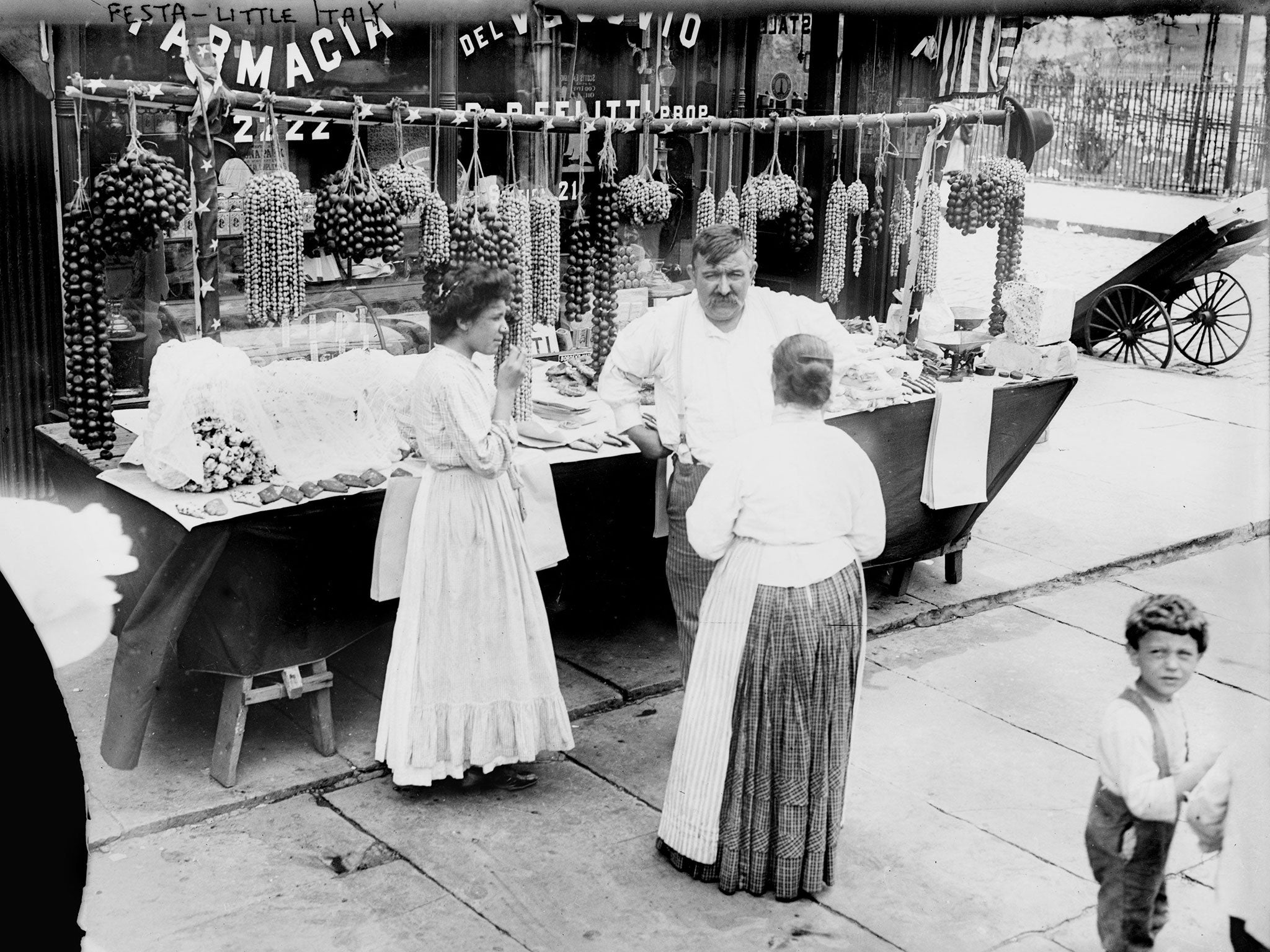Little Italy: Rising rents threaten the last of New York's traditional community
The neighbourhood was once a bustling centre of Italian immigrant life but now serves more as a tourist destination

Your support helps us to tell the story
From reproductive rights to climate change to Big Tech, The Independent is on the ground when the story is developing. Whether it's investigating the financials of Elon Musk's pro-Trump PAC or producing our latest documentary, 'The A Word', which shines a light on the American women fighting for reproductive rights, we know how important it is to parse out the facts from the messaging.
At such a critical moment in US history, we need reporters on the ground. Your donation allows us to keep sending journalists to speak to both sides of the story.
The Independent is trusted by Americans across the entire political spectrum. And unlike many other quality news outlets, we choose not to lock Americans out of our reporting and analysis with paywalls. We believe quality journalism should be available to everyone, paid for by those who can afford it.
Your support makes all the difference.Few Italian-Americans remain in Manhattan’s Little Italy, a neighbourhood of old tenement buildings and narrow streets where a small museum tries to keep a fading ethnic heritage alive.
One such tenant who remains might not for long. An 85-year-old Italian-American grandmother who has lived in Little Italy for more than 50 years says she is being forced out by her landlord. That landlord? The Italian American Museum.
“Why would you want to throw me out when I lived here all my life?” asked Adele Sarno, a feisty, raspy-voiced woman who proudly tells how she once served as queen of Little Italy’s most well-known event, the annual Feast of San Gennaro. “This is my neighbourhood.”
Sarno said the fight over her $820-a-month (£550), two-bedroom apartment above the Italian American Museum began about five years ago. That’s when she received a letter seeking to increase that rent to $3,500 a month, far more than the retired shopkeeper says she can afford.
The spat is the latest involving the museum to cause a commotion in Little Italy, which was once a bustling centre of Italian immigrant life and now serves more as a tourist destination. An Italian restaurant that had been open for decades closed its doors last week in a separate rent-related dispute.
“The negative press that this has caused is so detrimental to the spirit of the Italian immigrant,” said Lou Di Palo, whose family has run a popular Italian specialty foods shop in Little Italy for over a century. “I’m upset over it.”
But in recent decades, the character of Little Italy has been transformed. Gone are the days of portly mobsters walking its streets. They have been replaced by waves of gentrification and wealthy newcomers. The latest census data from 2013 shows only 554 out of 7,816 residents, about 7 per cent, in the census tract encompassing Ms Sarno’s street identify as having Italian ancestry.
The museum’s president, Joseph Scelsa, told The New York Times over the weekend that even after all Italian-Americans had gone from the area, “the legacy would still remain because we have an institution that does that”. Neither the museum’s president nor its spokesman replied to multiple emails and phone messages seeking comment. But they have said the museum is looking to expand its space, or sell the properties to a developer and remain there rent-free.
Ms Sarno said the museum is just after more money, pointing out that her upstairs neighbours pay several thousand dollars a month in rent.
She remains hopeful she can fight through the courts to forestall the eviction order. A judge has given her lawyers until 13 April to find some kind of solution.
There’s not much of Little Italy left, mainly a couple of blocks of Mulberry Street, populated with Italian restaurants and tourist stores featuring trinkets and “Kiss me, I’m Italian” and “Fuggedaboutit” T-shirts.
“The sort of everyday lived experience of the place as a residence of Italian Americans for all intents has been over for decades,” said Joseph Sciorra of the Italian-American Institute at Queens College. But for a museum dedicated to that history, turning Ms Sarno out shows “a lack of vision”, he said, suggesting it could have tapped Ms Sarno as a speaker or in some other capacity. Ms Sarno “is literally the living embodiment of the living history of Little Italy”.
AP
Subscribe to Independent Premium to bookmark this article
Want to bookmark your favourite articles and stories to read or reference later? Start your Independent Premium subscription today.
Join our commenting forum
Join thought-provoking conversations, follow other Independent readers and see their replies
Comments